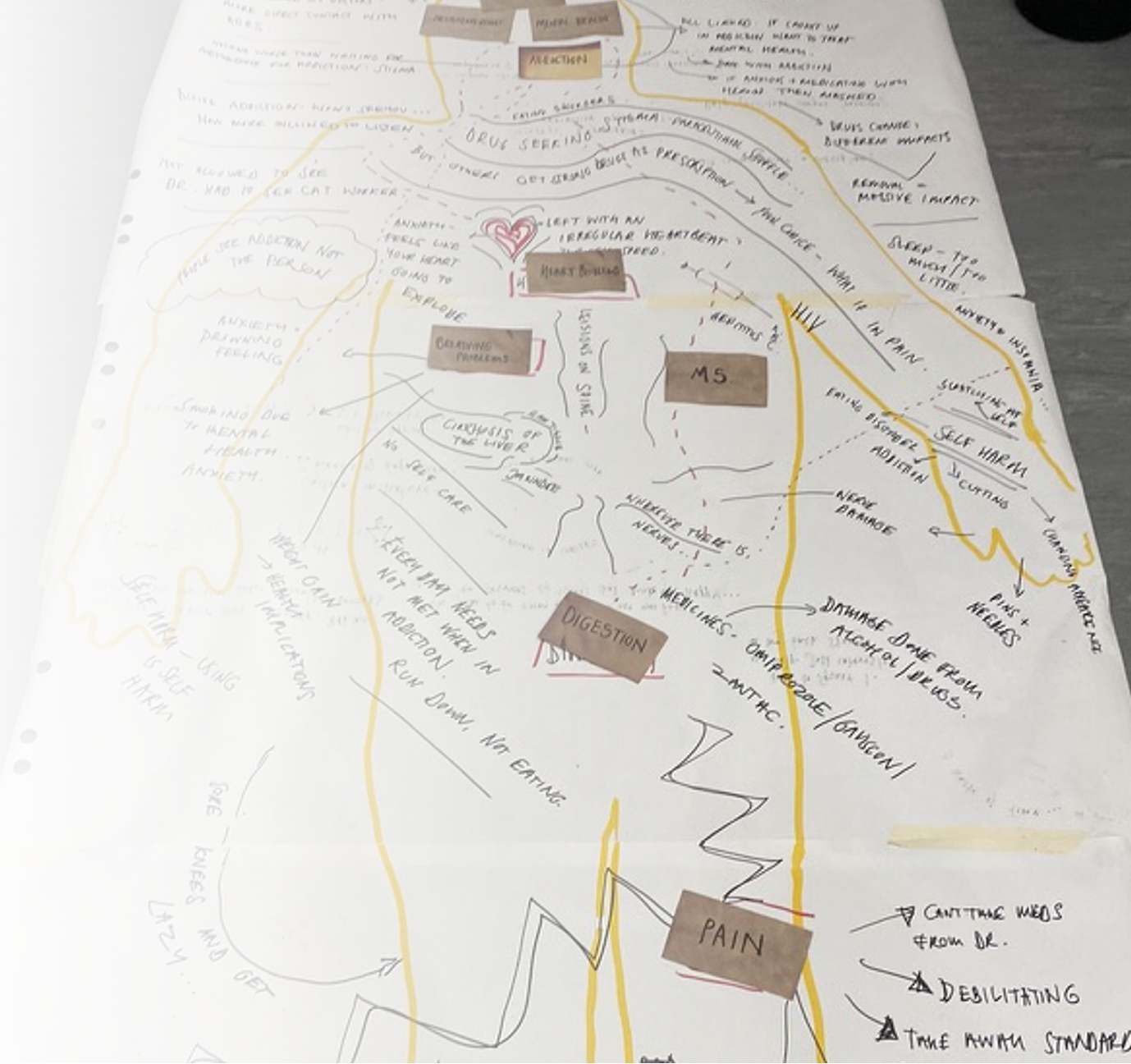Body mapping¶
Body mapping in an arts-based workshop in Glasgow.
Overview¶
The body mapping technique was employed during workshops to allow our group participants to create a life-size representation of their bodies. Together, we considered how health conditions, pain and emotional experiences can impact on the body and the mind, through drawing and annotation.
Application & use¶
First we used card and pens to note the different long-term health conditions affecting different members of the community group. These cards were then placed on a ‘body map’, which was an outline drawing of a group member. We discussed how the different conditions affected mental and physical wellbeing. The group were then encouraged to write and draw on the body map, to link the conditions and reflect on the impacts they had on their daily lives.
Why this approach?¶
Body mapping is a particularly effective research tool for communication and insights which may not be achieved through mainstream approaches. The activity allows participants to take ownership of their narratives, thus challenging traditional power dynamics in research.
Results & insights¶
Participants produced rich visual narratives through body mapping, which depicted their complex health experiences, allowing them to articulate feelings that verbal communication might not fully capture.
See also: A similar body and mind mapping activity features in the MLTC activity books
